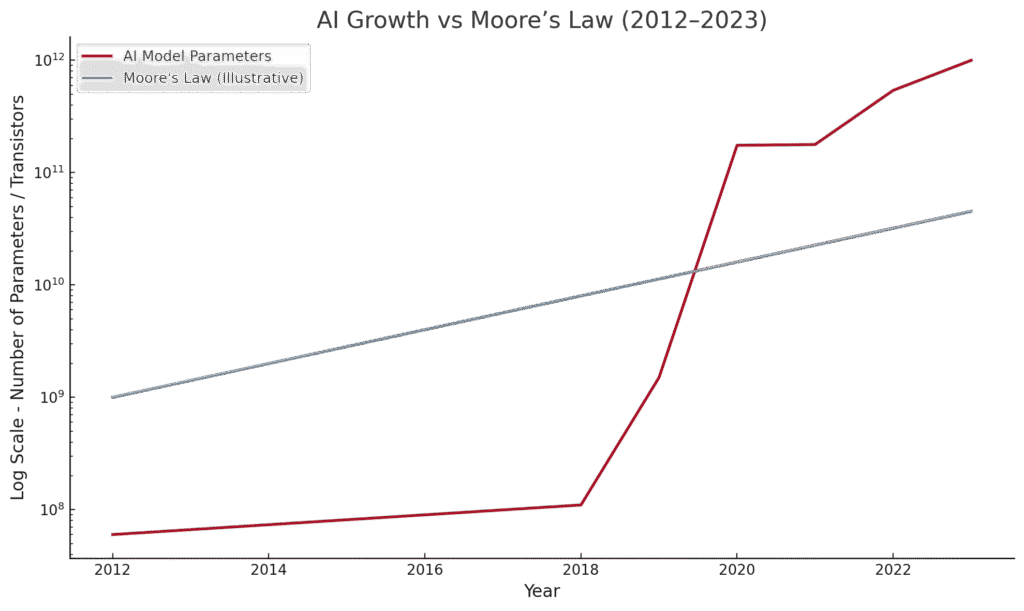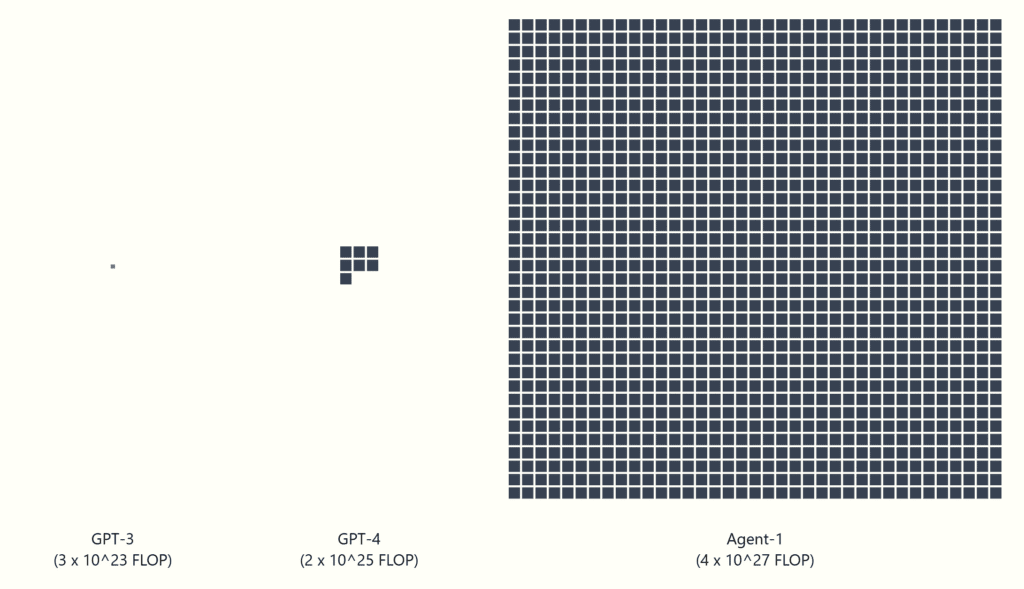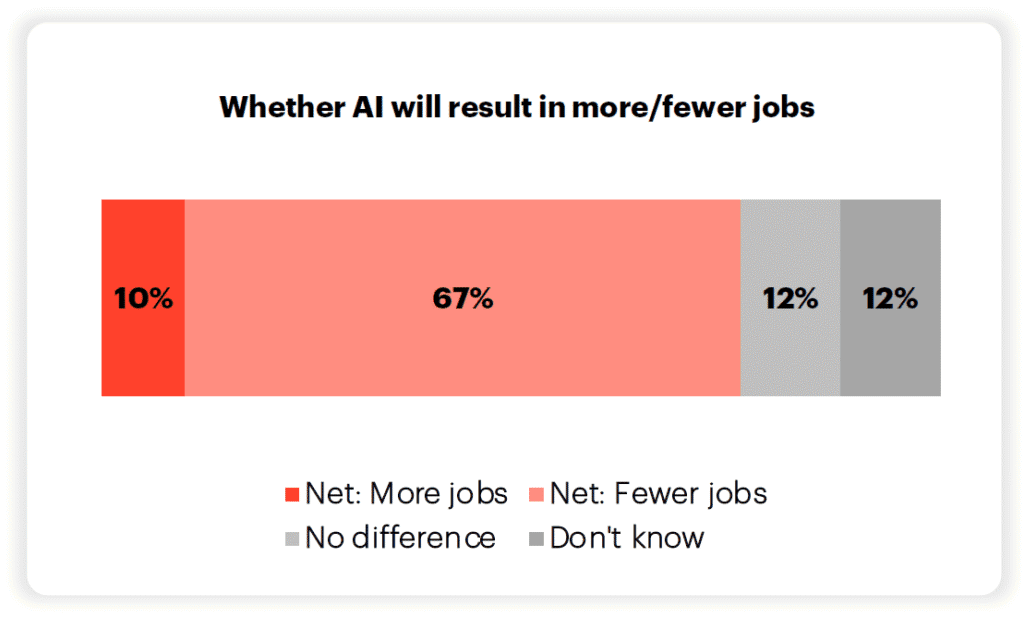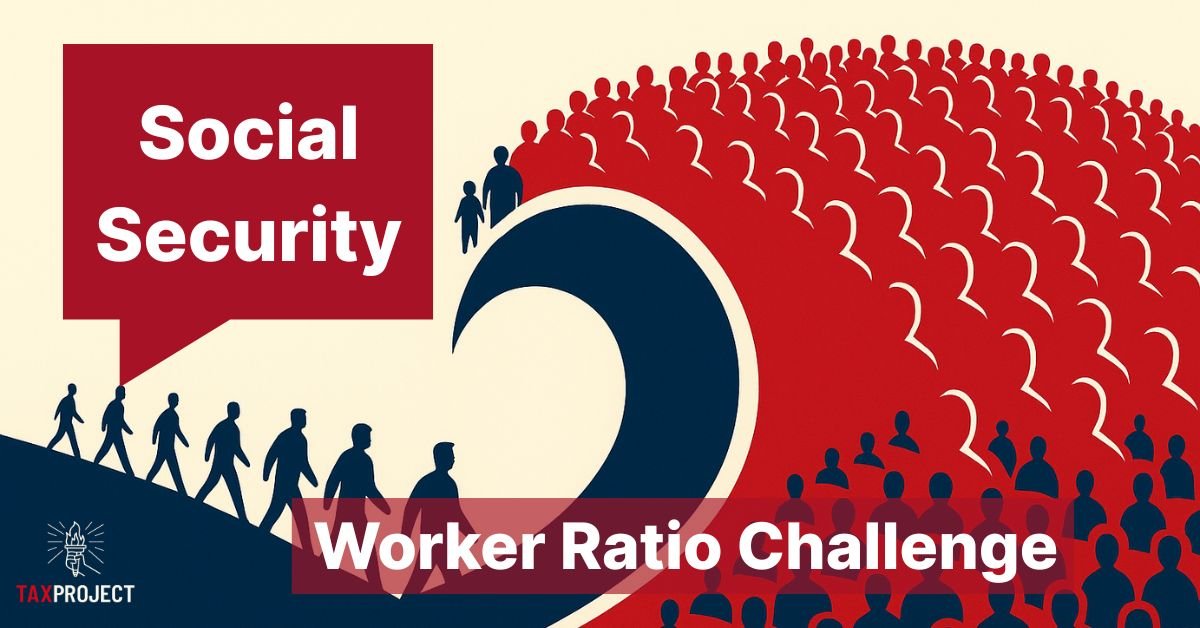What Is Universal Basic Income (UBI)?
Universal Basic Income (UBI) is a policy proposal in which all citizens receive regular, unconditional cash payments from the government, regardless of their employment status or income level. The goal of UBI is to provide individuals with financial security, alleviate poverty, and reduce inequality, especially in the face of rapid technological advancements that threaten to displace large portions of the workforce. Unlike other welfare programs, UBI is universal and unconditional, promoting a basic standard of living for everyone, regardless of their economic circumstances.
UBI has received significant attention in recent years, with proponents including economists, policymakers, and tech entrepreneurs arguing that it is essential to address the economic disruptions caused by automation and AI.
“Automation and AI are already taking over jobs, and the current system isn’t going to be able to keep up with the reality of the future economy. UBI is one of the only solutions that could mitigate this” [9]
Andrew Yang, 2020 Presidential Candidate
The Rise of AI and Its Impact on Employment
Artificial Intelligence (AI) is advancing at an unprecedented pace, and its impact on the labor market is already evident. According to a study by McKinsey, 45% of jobs in the United States could be automated by AI over the next 20 years, including jobs in transportation, customer service, and even professional sectors like finance and law [1]. While job loss due to automation has historically been restricted to routine and manual labor, AI’s increasing sophistication is now threatening jobs in professional sectors that were once thought to be immune to automation.
AI Surpassing Human Expertise in Every Field
AI has already surpassed human expertise in many fields, making it clear that automation will extend beyond low-skilled jobs. AI systems are now capable of performing highly specialized tasks such as diagnosing medical conditions, drafting legal documents, and predicting market trends with greater accuracy than human experts in some cases. As Elon Musk recently remarked, “AI is already greater than PhDs in all fields, and this is just the beginning. The speed of its advancement is far greater than anyone expected” [2]. This marks a dramatic shift, as AI systems are increasingly able to perform tasks that once required human judgment.
This rapid advance is also reflected in the speed at which AI systems are evolving. AI’s capabilities are no longer limited to simple pattern recognition or data sorting. They now include complex decision-making, creative tasks, and even emotional intelligence in areas like mental health therapy. These advancements underscore the fact that AI is not just a tool for automation but a transformative force that could reshape entire industries and displace millions of workers. These capabilities have already surpassed what many experts predicted, and the technology is progressing at a rapid pace.
“AI is already greater than PhDs in all fields, and this is just the beginning. The speed of its advancement is far greater than anyone expected”
Elon Musk
AI Growth: Outpacing Moore’s Law
AI’s growth is outpacing Moore’s Law, which predicted that computing power would double approximately every two years. While Moore’s Law has been largely accurate in predicting advancements in semiconductor technology, AI’s computational power has been doubling every 3.4 months since 2012 [1]. This rapid acceleration is driven by breakthroughs in machine learning, deep learning, and AI-specific hardware, leading to unprecedented increases in AI’s ability to learn, adapt, and perform complex tasks.
As Elon Musk has pointed out, “The speed of AI’s development is far greater than anyone expected. This is not just a revolution in technology, but in society itself” [2]. Musk’s statement highlights the profound societal shifts that AI’s growth is causing. The exponential growth in AI’s capabilities means that the potential for job displacement is also accelerating, with industries across the board seeing increasing automation. This rapid growth, as Musk and others point out, is only set to continue, further stressing the urgency of preparing for a future where human labor may no longer be necessary in many sectors.
“The speed of AI’s development is far greater than anyone expected. This is not just a revolution in technology, but in society itself”
Elon Musk


Misaligned Predictions and the Reality of AI’s Advancement
Historically, AI experts have consistently underestimated the speed of AI’s progress. Predictions from just five years ago stated that AI would not surpass human capabilities in certain fields for at least another decade. However, AI is already outperforming professionals in legal analysis, medical diagnostics, and financial forecasting. Geoffrey Hinton, a leading figure in deep learning, recently stated, “AI is advancing much faster than I expected. The capabilities we are seeing today were considered impossible a few years ago” [3].
This rapid development highlights the unpredictable nature of AI’s growth. The pace of technological advancement far exceeds what was originally predicted, and the implications for the workforce are still being understood. As Sam Altman, CEO of OpenAI, pointed out, “In the next decade, AI will completely transform work—entire industries will be automated, and millions of jobs will disappear” [4].
“AI is advancing much faster than I expected. The capabilities we are seeing today were considered impossible a few years ago”
Geoffrey Hinton, AI Pioneer

The U.S. Economic Landscape: How Much Would UBI Cost?
The Financial Reality: U.S. Economic Stats
To understand the financial feasibility of UBI, we must first consider the size of the U.S. economy. As of 2024, the U.S. Gross Domestic Product (GDP) stands at approximately $29 trillion, and the federal government’s annual revenue is estimated at $4.9 trillion [5]. However, even with such a large economy, the existing fiscal structure is not equipped to support the cost of a nationwide UBI program without significant reforms. The potential cost of providing UBI to all citizens is significant, but there are also mechanisms through which this cost could be offset.
Estimating the Cost of UBI
To understand the potential cost of implementing UBI, let’s examine various payment scenarios:
- Poverty-Level UBI: To keep individuals above the U.S. poverty line, the $30,000 annual payment for a family of four would cost approximately $8.5 trillion per year if paid universally to all U.S. citizens.
- Middle-Class UBI: To bring individuals up to the middle-class income level (roughly $40,000 per person), the cost would rise to approximately $12 trillion annually.
The cost of funding such a program would depend on the total population receiving the benefit. With 330 million people in the U.S., these estimates reflect the financial burden on the government if UBI were to be implemented universally. However, funding such a program would require identifying new revenue sources, particularly given the U.S. government’s current budget constraints.
Job Loss Estimates: U.S. Job Displacement by AI
It’s important to consider the scale of job displacement AI is expected to cause. According to estimates from McKinsey, up to 45% of jobs in the U.S. could be automated over the next 20 years, with significant impacts on sectors such as transportation, customer service, and even professional services like healthcare and finance [1].
Integrating UBI with Existing Social Welfare Programs
One potential way to offset the costs of UBI is by merging it with existing social welfare programs, such as unemployment insurance, food assistance, and housing subsidies. These programs already provide a financial safety net to vulnerable populations. If we were to integrate UBI with these existing programs, the total cost could be reduced.
For example, in the U.S., social welfare programs account for approximately $2.5 trillion annually [5]. If we were to replace these programs with a streamlined UBI system, the cost of UBI could be reduced significantly, but it would still require additional revenue sources to cover the gap. Merging existing welfare programs with UBI could help offset costs and ensure that people are supported without increasing the total burden on the government.
So with back of the napkin calculations of $8.5-12 Trillion in costs offset by $2.5 trillion in existing programs $6-9.5 trillion funding gap, or 20-33% of GDP.
Macro Backdrop
Unfortunately, the timing for UBI may not be great when looking at the US Economic condition. Fresh off major economic shocks of COVID, and the 2008 Financial Crisis, the US National Debt has not been as high since World War II standing at a record $36.2 trillion. Top that off with annual trillion dollar budget deficits (the US hasn’t had a budget surplus since 2001) and you don’t get a rosy picture for the US taking on major ongoing entitlement programs, with UBI making Medicare and Social Security look like minor expenses.
If you take into account the backdrop of likely rising inflation costs due to Tariffs, rising Global Competition, a Cold War with China, escalating Military tensions in the world, the dropping demand for the US Dollar, and looming costs of Climate Change – you get a daunting challenge just maintaining the status quo, much less what would likely be the largest budget item in US history.
The Importance of UBI in a Future with Diminished Employment Opportunities
As AI continues to replace human labor across various sectors, the risk of widespread unemployment grows. UBI is increasingly being seen as a necessary solution to address the economic consequences of widespread job displacement. If AI is able to replace up to 45% of jobs in the U.S., as predicted by McKinsey, UBI may become a key tool in ensuring that displaced workers have the financial security to thrive in a rapidly changing economy.
UBI offers a way to cushion the financial blow for individuals who lose their jobs due to AI, ensuring that they maintain purchasing power and can continue to participate in the economy. Moreover, UBI could empower individuals to pursue education, entrepreneurship, or other forms of meaningful work without the hardship of financial insecurity.
A Neutral Perspective: Adapting to an Evolving Economic and Technological Landscape
While UBI is in general a very Social Program, in this context UBI is a neutral solution to the challenges posed by AI and automation, providing a financial safety net without advocating for any specific economic ideology. As the economy rapidly changes, UBI may become one of the few available mechanisms to ensure that all individuals have access to the resources necessary for a dignified life.
AI Displacement: A New Challenge
Unlike past technological revolutions, such as the Industrial Revolution or the rise of the internet, where workers were able to transition to new industries, AI represents a unique challenge. The rapid growth of AI means that entire job categories may be permanently eliminated, and it is unclear whether the job market will be able to absorb the displaced workers. This represents a new dynamic in the relationship between technology and employment, one that requires adaptive solutions like UBI.
“In the next decade, technology is going to radically disrupt jobs. We need to be ready for that transformation, and UBI is a step in the right direction” [9]
Andrew Yang
The Urgency: Preparing for the Rapid Rise of AI
The pace of AI development is accelerating, and its impact on the labor market is becoming more immediate. Experts predict that AI will continue to replace human labor at a faster rate than many anticipate. In fact, Sam Altman, CEO of OpenAI, recently remarked that AI will “completely transform work” within the next decade [4]. Industry experts, including those from PwC and McKinsey, have projected that by 2027, AI could replace as many as 50% of jobs in some sectors. Many experts have gone so far as to say that the AI revolution will be bigger than the Industrial Revolution in terms of its societal and economic impact.
Polling data supports the concern that AI is advancing too quickly. 82% of respondents in a Artificial Intelligence Policy Institute survey expressed concern about the rapid development of AI and its potential consequences for jobs and society [11]. The challenge now is to ensure that we can prepare for these disruptions in time, and UBI may be one of the few mechanisms to manage this shift effectively.
AI 2027 Report highlights the projection that by 2027, AI will not only replace millions of jobs but will fundamentally reshape the global economy, placing more pressure on current social welfare systems to keep up with these transformations (10).
Conclusion: The Need for Proactive Solutions
The rapid development of AI presents both opportunities and risks. While AI promises to increase productivity and innovation, it also threatens to displace a large portion of the workforce, creating economic instability. Universal Basic Income could provide a solution to the challenges posed by AI-driven job displacement, ensuring that individuals have the financial resources to live with dignity, regardless of employment status.
As AI continues to accelerate, it is crucial that we begin planning for the future now. UBI may not be the perfect solution, but it could be one of the few mechanisms capable of ensuring economic stability and social cohesion in an increasingly automated world.
Disclaimer
Tax Project Institute does not take a stand on UBI as a policy, and is not advocating for it’s implementation. This article reflects our interest in calling out the evolving landscape that maybe presented in the coming years of what AI could bring about in terms of societal change, and how America may deal with such a large and rapid change.
References
- Brynjolfsson, E., & McAfee, A. (2018). The Second Machine Age: Work, Progress, and Prosperity in a Time of Brilliant Technologies. W. W. Norton & Company.
- Musk, E. (2024). Elon Musk on AI’s Capabilities and Risks. The New York Times. https://www.nytimes.com/2024/07/11/elon-musk-ai-experts.html
- Cryptoslate. (2024). AI Growth Outpaces Moore’s Law. https://cryptoslate.com/ai-growth-outpaces-moores-law-soaring-beyond-traditional-limits/?utm_source=chatgpt.com
- MIT Technology Review. (2023). AI Surpassing Human Expertise. https://www.technologyreview.com/2023/08/06/20251022/ai-surpassing-human-expertise-predictions
- Congressional Budget Office. (2024). The U.S. Federal Budget and Economic Outlook. https://www.cbo.gov/publication/57632
- OpenAI. (2024). AI’s Future Impact on Work. OpenAI Blog. https://openai.com/press-releases
- YouGov (2024) https://business.yougov.com/content/49938-us-artificial-intelligence-report-2024.
- PwC. (2020). The Impact of Artificial Intelligence on the Global Economy. PwC Report. https://www.pwc.com/gx/en/issues/artificial-intelligence/ai-predictions.html
- Yang, A. (2020). Andrew Yang on UBI and AI. https://www.yang2020.com/
- AI 2027. (2024). AI and the Future of Work: A 2027 Perspective. https://ai-2027.com/
- Artificial Intelligence Policy Institute (AIPI) https://theaipi.org/











